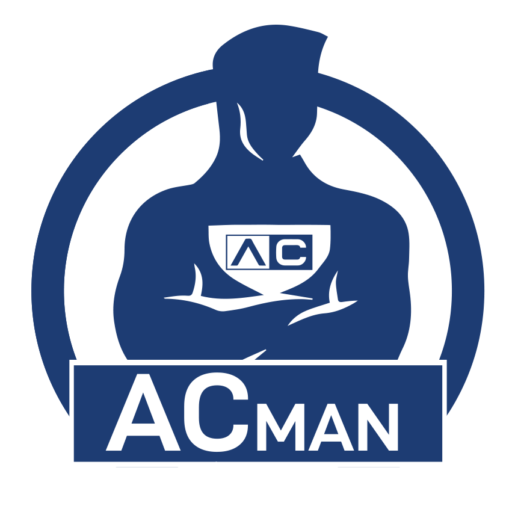In the world of air conditioning systems, understanding the various types of air ducts is akin to knowing the veins and arteries of your HVAC unit. Just as the human body relies on its circulatory system for optimal function, your air conditioner depends on its ductwork to distribute cool air efficiently throughout your home or office space.
One critical factor in determining the optimal performance of your duct AC system is the type of air ducts utilized. With numerous options available, understanding the characteristics and benefits of each is essential.
Let's explore different types of air ducts to assist you in making an informed decision for your air conditioner needs.
1. Flexible Air Ducts
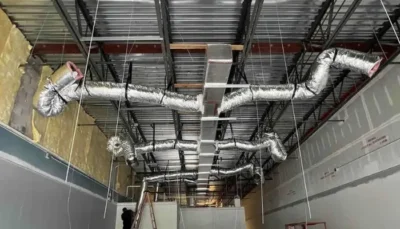
Flexible Air Ducts
Flexible duct AC, also known as flex ducts, are crafted from a combination of plastic and wire coils, offering high flexibility. They are particularly useful in areas where rigid ductwork installation is challenging.
Advantages:
- Easy installation in tight spaces.
- Cost-effective solution.
- Ideal for retrofitting existing structures.
Considerations:
- Prone to damage if mishandled.
- Risk of kinks affecting airflow.
2. Rigid Sheet Metal Ducts
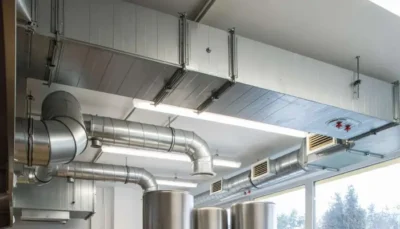
Rigid Sheet Metal Ducts
Rigid sheet metal ducts are fabricated from galvanized steel or aluminum sheets, providing durability and longevity. They are commonly found in both residential and commercial. AC companies.
Advantages:
- Exceptional durability and resistance to damage.
- Maintains airflow efficiency over time.
- Suitable for long-term installations.
Considerations:
- Requires professional installation due to fabrication requirements.
- Challenging to install in existing structures.
3. Fiberglass Duct Board
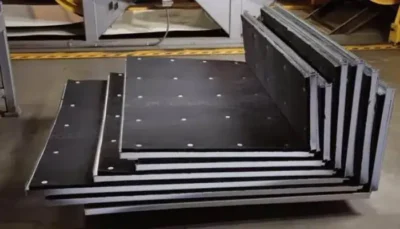
Fiberglass Duct Board
Fiberglass duct ac board is composed of compressed fiberglass strands formed into a rigid board. These ducts offer superior insulation properties, helping to minimize energy loss.
Advantages:
- Excellent insulation capabilities.
- Resistant to mold and mildew growth.
- Quieter operation compared to metal ducts.
Considerations:
- Susceptible to damage if exposed to moisture.
- Requires careful handling during installation.
4. PVC Ducts
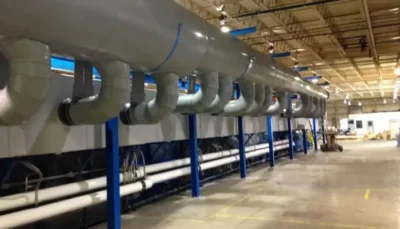
PVC ducts are constructed from polyvinyl chloride material, offering a lightweight and cost-effective alternative. They are commonly utilized in industrial and commercial settings.
Advantages:
- Lightweight and easy to transport.
- Resistant to corrosion and chemical damage.
- Suitable for high-moisture environments.
Considerations:
- Limited temperature tolerance compared to metal ducts.
- May emit odors at high temperatures.
5. Spiral Ducts
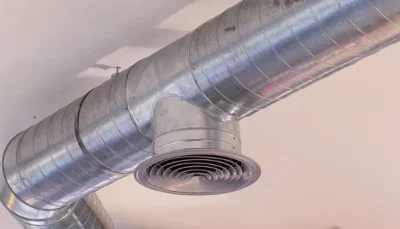
Spiral Ducts
Spiral ducts feature a spiral design and are typically made of galvanized steel. They promote efficient airflow distribution and are prevalent in large commercial buildings.
Advantages:
- Efficient airflow with minimal resistance.
- Quick and easy installation.
- Resistant to leaks and air loss.
Considerations:
- May require additional insulation in extreme climates.
- Higher initial cost compared to other options.
6. Fabric Ducts
Fabric ducts, also known as textile ducts, are made from porous fabric materials. They offer flexibility in design and are often used in spaces where aesthetics are a priority.
Advantages:
- Customizable design options.
- Lightweight and easy to handle.
- Reduced noise transmission.
Considerations:
- Requires periodic cleaning to maintain air quality.
- Limited durability compared to metal ducts.
7. Insulated Ducts
Insulated ducts feature an additional layer of insulation, typically made from foam or fiberglass, wrapped around the ductwork. This insulation helps prevent heat loss or gain, improving energy efficiency.
Advantages:
- Enhanced thermal efficiency.
- Reduced condensation risk.
- Improved indoor comfort.
Considerations:
- Requires careful installation to ensure proper insulation coverage.
- Higher initial cost compared to uninsulated ducts.
8. Composite Ducts

Composite Ducts
Composite ducts combine different materials, such as fiberglass, aluminum, and plastic, to leverage the benefits of each. They offer a balance of strength, flexibility, and insulation properties.
Advantages:
- Versatile material combination.
- Resistant to corrosion and rust.
- Durable and long-lasting.
Considerations:
- Higher cost compared to traditional duct options.
- Limited availability depending on region.
9. Concrete Ducts

Concrete Ducts
Concrete ducts are constructed from precast concrete sections, providing robustness and fire resistance. They are commonly used in industrial applications or buildings requiring high structural integrity.
Advantages:
- Excellent fire resistance properties.
- Durable and long-lasting.
- Suitable for underground installations.
Considerations:
- Heavy and challenging to transport.
- Requires specialized equipment for installation.
10. Composite Metal Ducts
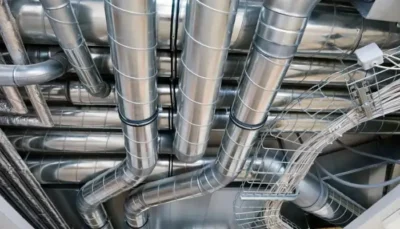
Composite Metal Ducts
Composite metal ducts are made from a combination of metal alloys, offering a balance of strength and flexibility. They are suitable for various AC company applications, including residential and commercial projects.
Advantages:
- Strength and durability of metal construction.
- Flexibility for customized installations.
- Corrosion-resistant properties.
Considerations:
- Higher cost compared to some duct options.
- Requires professional installation for optimal performance.
When selecting air ducts for your AC system, consider factors such as the size of your space, the layout of your building, and your budget. Consulting with an HVAC professional can help you make an informed decision, particularly when it comes to choosing between Air ducts and other options offered by AC companies.
Maintaining Your Air Ducts
In conclusion, choosing the right type of air ducts for your air conditioner is essential for ensuring optimal performance, energy efficiency, and indoor comfort. Whether you opt for flexible, fiberglass, sheet metal, PVC, fabric, composite, insulated, rigid fibrous, aluminum flex, or duct board ducts, each type has its unique features and benefits. By understanding the differences between these duct materials, you can make informed decisions that meet your specific HVAC requirements and budget constraints.
Consult with a qualified HVAC professional to determine the most suitable air ducts for your home or commercial building. This will ensure years of reliable and efficient cooling performance.
FAQs
Common signs include visible dust or debris buildup, musty odors when the AC is running, and uneven airflow throughout your space. Regular inspection and maintenance of your duct AC system, often provided by reputable AC companies, can prevent such issues.
It’s recommended to have your air ducts inspected by a professional HVAC technician at least once every two to three years. This ensures optimal performance and identifies any potential issues early on, a service commonly offered by AC companies.
While some homeowners may attempt DIY duct installation, it’s generally recommended to hire a professional to ensure proper sizing, sealing, and installation. AC companies have the expertise to handle such installations efficiently and effectively.
Insulated air ducts can help improve energy efficiency and indoor comfort, making them a worthwhile investment, especially in hot or cold climates. AC companies often recommend insulated ducts to enhance the performance of your air conditioner.
With proper maintenance, air ducts can last anywhere from 10 to 15 years. However, factors such as material quality and environmental conditions can affect their lifespan. Regular maintenance and inspections by AC companies can help extend the life of your duct AC system.





